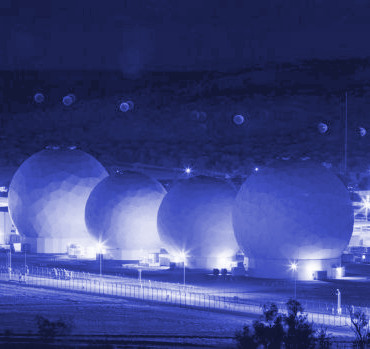Pine Gap papers show drone role
 Leaked documents have revealed the role that Australia’s secretive Pine Gap base plays on US battlefields.
Leaked documents have revealed the role that Australia’s secretive Pine Gap base plays on US battlefields.
The Joint Defence Facility Pine Gap base located in the centre of the country near Alice Springs, provides vital geolocation intelligence to the US military, which is used to locate targets for bombing, special forces assaults and drone strikes.
The US military has used unmanned drones to kills thousands of insurgents and civilians across countries including Pakistan, Afghanistan Syria, Yemen and Somalia.
Documents from the massive tranche of classified information leaked by NSA whistleblower Edward Snowden are still being pored over around the world, with details on Pine Gap having just been uncovered by journalists for the ABC’s Background Briefing.
A document titled “NSA Intelligence Relationship with Australia” describes the shifting role of Pine Gap, which the NSA refers to by the codeword ‘RAINFALL’, as it becomes increasingly military-focused.
“Joint Defence Facility at Pine Gap (RAINFALL) [is] a site which plays a significant role in supporting both intelligence activities and military operations,” it says.
“One of RAINFALL's primary mission areas is the detection and geolocation of Communications Intelligence, Electronic Intelligence and Foreign Instrumentation signals.”
Richard Tanter, co-author of a recent Nautilus Institute report on Pine Gap, says the documents confirm the military role of a facility that is barely acknowledged by either the US or Australia.
“Those documents provide authoritative confirmation that Pine Gap is involved, for example, in the geolocation of cell phones used by people throughout the world, from the Pacific to the edge of Africa,” he told reporters.
“It shows us that Pine Gap knows the geolocations, it derives the phone numbers, it often derives the content of any communications, it provides the ability for the American military to identify and place in real time the location of targets of interest.”
Another of the leaked NSA documents includes a “site profile” of Pine Gap, which detail the facility's role in both collecting signals and analysing them.
“RAINFALL detects, collects, records, processes, analyses and reports on PROFORMA signals collected from tasked target entities,” the document states.
PROFORMA signals are used for radar and weapon systems including surface-to-air missiles, anti-aircraft artillery and fighter aircraft — providing vital tactical information in near real-time to US forces on the battlefield.
Emily Howie, director of advocacy and research at the Human Rights Law Centre, is concerned about Pine Gap's role in drone strikes.
“The legal problem that's created by drone strikes is that there may very well be violations of the laws of armed conflict, or war crimes as it's called colloquially, and that Australia may be involved in those potential war crimes through the facility at Pine Gap,” she told the ABC.
“Australia, in so far as it is locating suspects that the US targets, is assisting the US. So it could be liable for any crimes committed by the US, in terms of aiding and assisting in that.
“The question then is: Is the killing that's done by the United States a war crime or not?”
Ms Howie says Australians should be able to learn more about and debate the uses of Pine Gap.
“What we have here are credible and really serious allegations made against the personnel at Pine Gap that they could be involved in assisting international crimes — war crimes — and we have absolutely zero transparency around what's happened,” she says.
Peter Jennings, executive director of the Australian Strategic Policy Institute, an independent thinktank funded by the Department of Defence, says Pine Gap's role is pivotal in Australia's alliance with the US.
“If you accept that the USA and Australia, we're fighting in necessary conflicts in the Middle East, then it's appropriate that our intelligence facilities support those conflicts,” he told reporters.
“It reflects a reality that both Australia and the United States and a significant number of other countries besides, are engaged in military operations against a fairly entrenched enemy in the form of extremists or terrorists that are operating in a number of countries in the Middle East. So I think it's perfectly reasonable that we should be using our intelligence resources to support our military operations in in those countries.”








 Print
Print